Just as there is no agreed-upon definition for “gentrification” or “safety,” there are no universal standards when it comes to gathering community feedback.
A decade-long South Philadelphia streets fiasco demonstrates this idea in a perfect microcosm: Washington Avenue and its controversial repaving.
Washington Avenue is a wide corridor housing businesses and residences on either side of a five-lane road. Multiple buses use it to cross the city from east to west, and there is parking on both sides of the street. While there is a bike lane in each direction, they are unprotected and the lines demarcating them faded long ago. It stretches across the Grays Ferry, Point Breeze and Italian Market neighborhoods and is historically home to diverse Black, Latinx, Italian and Vietnamese communities. It is also an emergency evacuation route, providing a critical passage during snowstorms and other disasters such as the explosions that occured on June 21, 2019 at the now-shuttered Philadelphia Energy Solutions refinery.
If you ride the 64 bus toward Columbus Boulevard heading east, you’ll pass a solid ribbon of contractor and mechanic supply shops. There are also the essentials: daycare, salon, wireless store, dollar store, laundromat, gym. There are cultural reminders of the communities that built the neighborhood: Vietnamese restaurants and plazas, a church, a park with trees, small family businesses. Then there are the obvious signs of gentrification: an axe-throwing range, vintage boutiques, a microbrewery, development companies. You’ll see newly built high-rises to the north and hear the rush of the highway to the east. You’ll notice some of the largest appliance stores in town, and the gleaming Target at Broad Street.
As Sean Blanda wrote in The Philadelphia Citizen, the repaving process began in 2013 with a series of public meetings conducted by the Philadelphia Office of Transportation, Infrastructure and Sustainability (OTIS). It then conducted a series of traffic and route analyses as well as business and parking surveys over the course of the next seven years, right up until the onset of the COVID-19 pandemic.
Still, the City continued to gather feedback from residents and businesses surrounding Washington Avenue, the groups that would be most impacted by any potential repaving decisions. During the pandemic, OTIS gathered 5,458 survey responses in four languages and mailed 5,400 physical postcards to residential homes surrounding the avenue up to two blocks out. They also conducted 37 meetings with 26 Registered Community Organizations (RCOs) and civic organizations and met with 80% of the 187 businesses projected to be impacted by the potential parking and loading changes the repaving would bring.
These surveys presented three options: a three-lane option, a four-lane option, and a “mixed” option. There was no option for the five-lane status quo to remain.
During the initial feedback process, the Bicycle Coalition of Greater Philadelphia wrote in a blog post: “For the record, we believe Option A [three lanes] is the best for Washington Avenue. But we encourage you to decide for yourself.”
We really do believe that Washington Ave. is an emergency thoroughfare. That’s what it was designed for.”
— Albert Littlepage, president of Point Breeze Community Development Coalition
Albert Littlepage, president of Point Breeze Community Development Coalition, noted that he had mixed feelings about repaving at first, but was above all concerned that it was first presented as an issue of safety as opposed to bikeability.
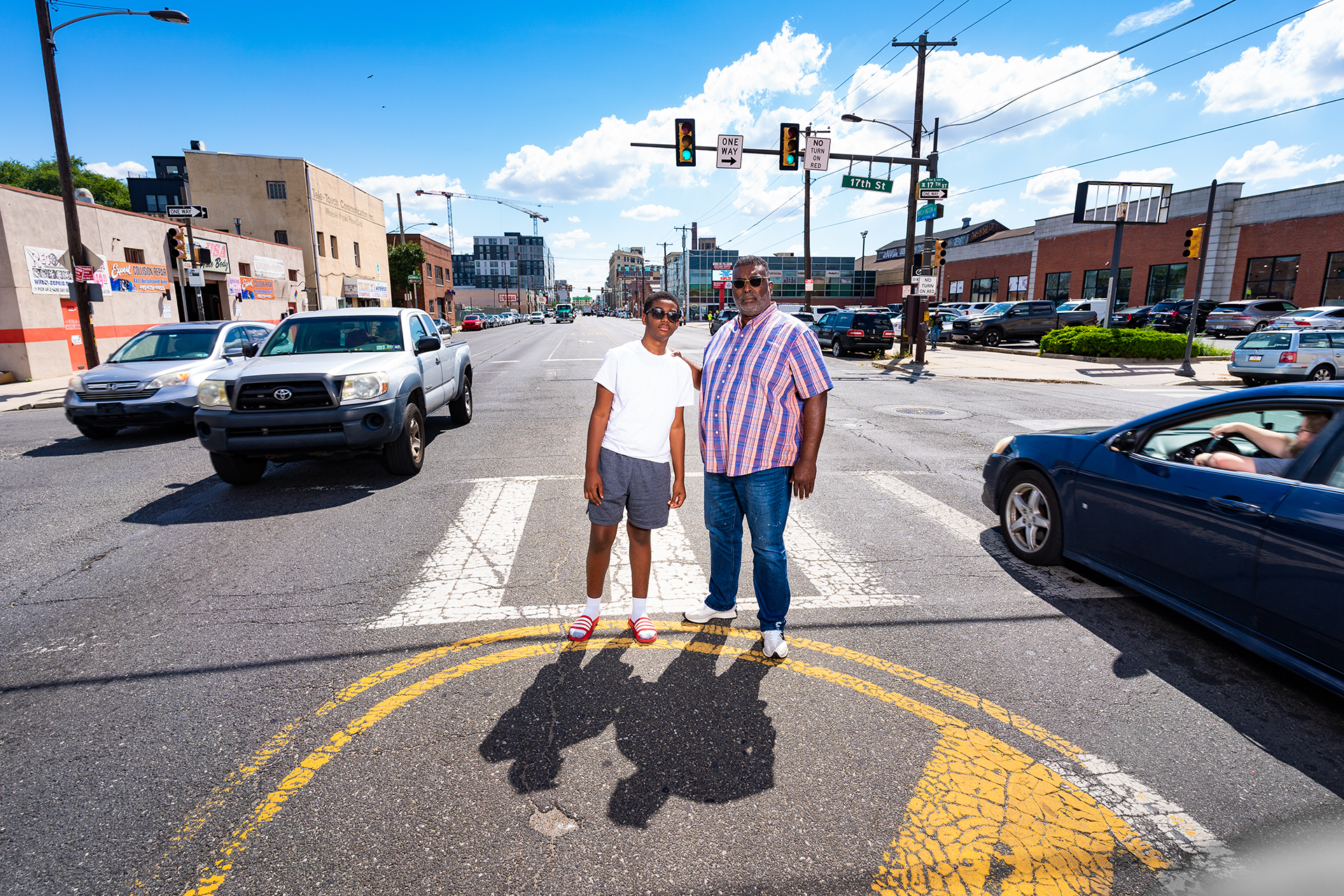
“We really do believe that Washington Ave. is an emergency thoroughfare. That’s what it was designed for,” he said. “But one of the things we also believe in is there are certain traffic economy measures that can be put in place in the present conditions of the road.” Littlepage thus feels that pro-road diet arguments about “safety” are more or less a red herring.
While Washington is on the City’s “High Injury Network,” some activists claim that there are city roads far more dangerous and in greater need of reconfiguration.
One of them is Melissa Robbins, an independent civil rights activist. While Robbins lives in Northeast Philadelphia, she has been part of the vocal minority advocating for an unchanged Washington Avenue.
“Our city is being gentrified. Whether it’s North Philadelphia, South Philadelphia or West Philadelphia,” she says. “Now, so many people want to minimize their drive, they want to bike, they want to walk. Well how do you do that? You leave the suburbs and you come into the city. Well, there’s a problem.”
This problem, she says, is that the white people who move into the city displace Black and Brown residents in order to create an all-white enclave.
Andrew Davies is a member and volunteer with 5th Square, an urbanist political action committee that prioritizes street and traffic safety — and favors the three-lane option.
Yet the issue has touched Davies personally as well. The father of a one-year-old, Davies says that traffic safety concerns are already a part of his child’s life. “It’s definitely a part of why we’re on this side of Washington Avenue with our daycare,” he said. He also noted that when his child turns five, he will need to cross Washington to attend elementary school, adding to his concern about safety on the avenue.
To many older residents, the decision to not include a five-lane option at all felt like a pro-gentrification decision in itself. There was no way to adequately voice their preference.
Claudia Sherrod, resident and longtime community member, says the changes would make her neighborhood at 9th and Washington “more like New York.” Sherrod, an 81-year-old resident who has lived in the neighborhood her entire life and drives her car every day, began giving feedback at the very beginning of the process about 10 years ago.
“We told [Mike Carroll, the City’s deputy managing director for transportation], ‘No, we don’t want that.’ We are comfortable with what we have; we appreciate what we have; we like togetherness — the closeness of the people when we come and shop on Washington Avenue. We didn’t want to change it from what it is,” Sherrod said.
Among the options presented by the City, there emerged an overwhelming preference (71%) for the three-lane option, the most radical reduction. And while the survey was essentially equal in its volume of digital and physical outreach, residents in favor of the status quo argued that the City has not sufficiently engaged with their viewpoint.
The City’s response was to host a series of closed-door, invite-only meetings where handpicked guests could voice their opinions.
“Philadelphia’s car culture and the standard operating procedure of deferring to the position of near neighbors, especially those near neighbors who are politically connected, remain a significant hurdle,” the Bicycle Coalition of Greater Philadelphia wrote in a recent statement.
Alejandro Morales lives a few blocks off Washington Avenue and has lived and bicycled around Philadelphia for the past 20 years. He gave his feedback in favor of the three-lane option and supported it through his membership in the Bicycle Coalition. He pointed out that it is a gross generalization to assume that longtime residents of Washington Avenue don’t prefer safer routes for biking and walking. In fact, he said, it’s even more important to the low-income residents who can’t afford cars.
It was largely very disillusioning to be engaged in the public process …”
— Alejandro Morales, South Philadelphia resident
In response to the private meetings that were held after the public meetings, Morales responded, “It was largely very disillusioning to be engaged in the public process, to feel like your voice is being heard, that you’re being seen as a resident, that your concerns are being spoken to, because all of that engagement was so great.”
Morales believed that with so much information being presented in the surveys, he was being trusted as a community member to make an informed decision. So he felt that the city was cutting him off from that process by holding these private meetings.

So what is it exactly about bike lanes that bring up fears of gentrification? Some see bikes and bike lanes as a symptom of white suburbanites displacing longtime city residents, but no data has been presented to prove that argument.
Unfortunately, the surveys did not ask for any demographic or economic information from respondents, and so there is no way to know whether there is consensus within any given community.
Of course, Washington Avenue already has bike lanes and sidewalks. Three-lane advocates are asking to use them safely and as intended.
Additionally, it is evident that gentrification has already affected Washington Avenue and South Philadelphia while the road remained as it was.
After a decade of opinions, outreach, more outreach, feedback, more feedback, a pandemic and two Councilmembers’ decisions, OTIS decided on a “mixed” option, which had no popularity with any group at any point.
While Councilmember Mark Squilla’s district covers much of the project area, the area between Grays Ferry Avenue and Broad Street is Councilmember Kenyatta Johnson’s district. And while Squilla introduced the necessary parking legislation to get paving underway, Johnson did not.
As of late July, Squilla’s office had stated that the eight-week weather-dependent paving process would begin in September 2022. While the road will be repaved and restriped from Grays Ferry Avenue to 4th Street, only the portions in Squilla’s district, from 4th Street to 11th Street, will get the protected bike lanes, speed cushions, bus boarding islands and other traffic safety improvements.
Councilmanic prerogative means that even if the majority preference for three lanes had gone through to the Councilmembers or if OTIS went with the minority preference for the five-lane status-quo option, it still might have been hindered by a single person.
This raises the main question: How can the City expect to convince the community to engage with a system when one person can undermine a democratic decision?

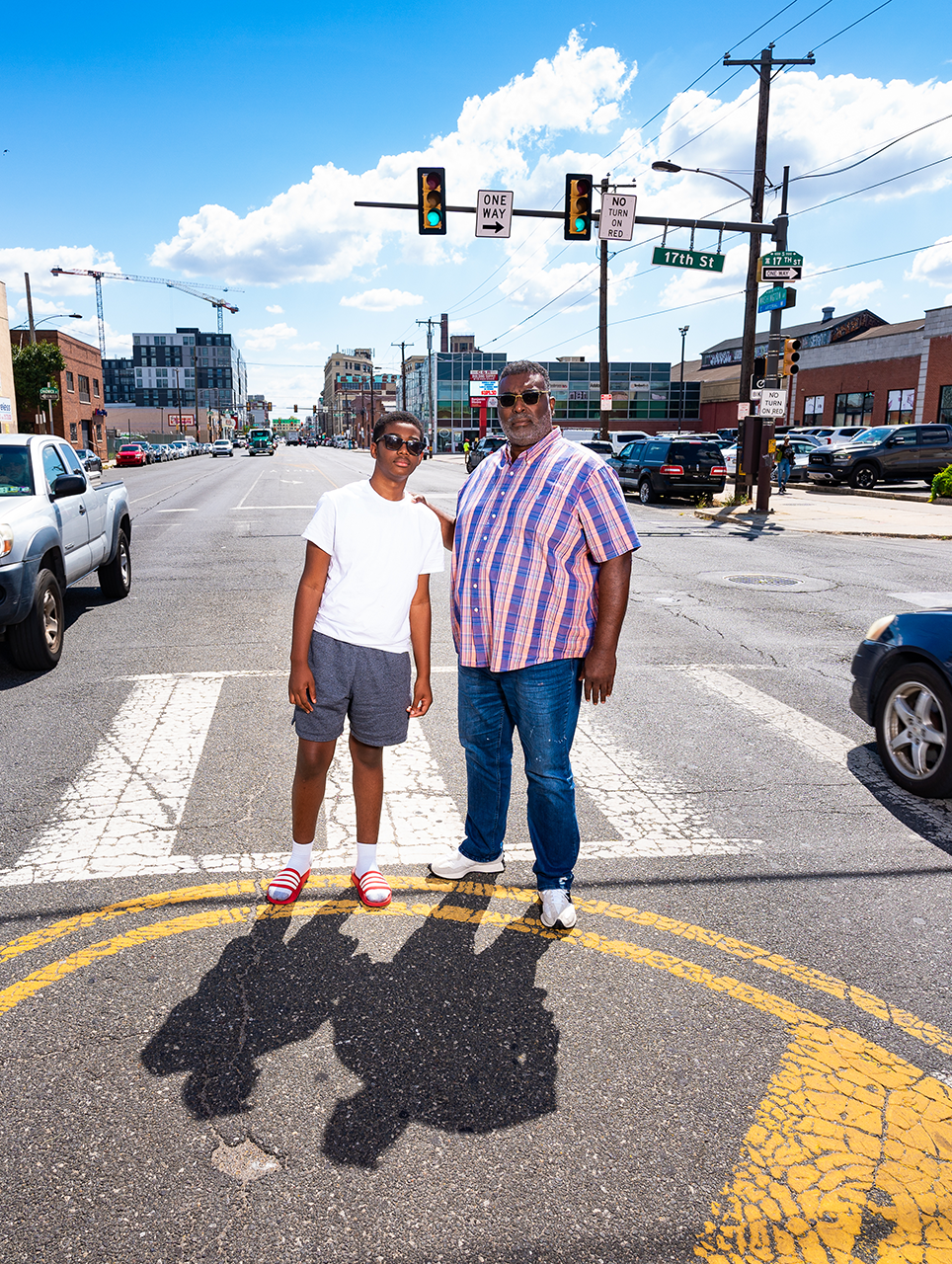
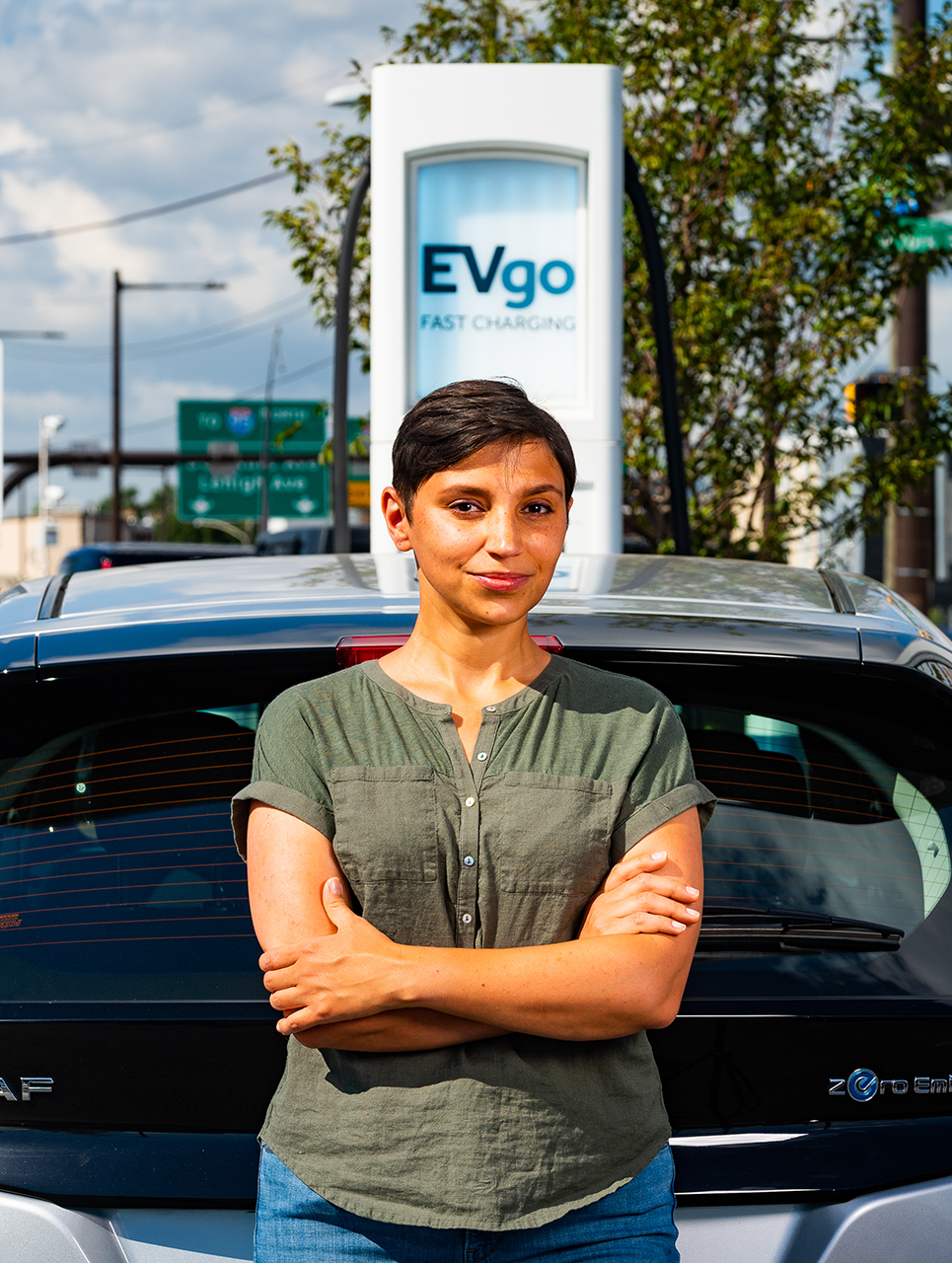


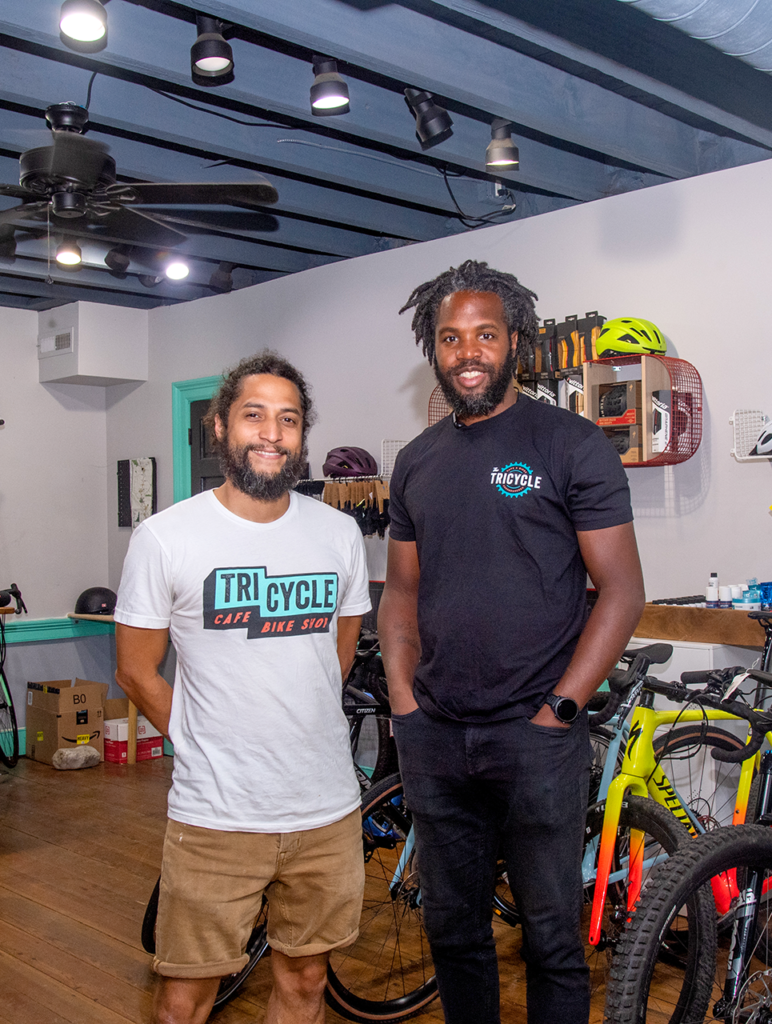

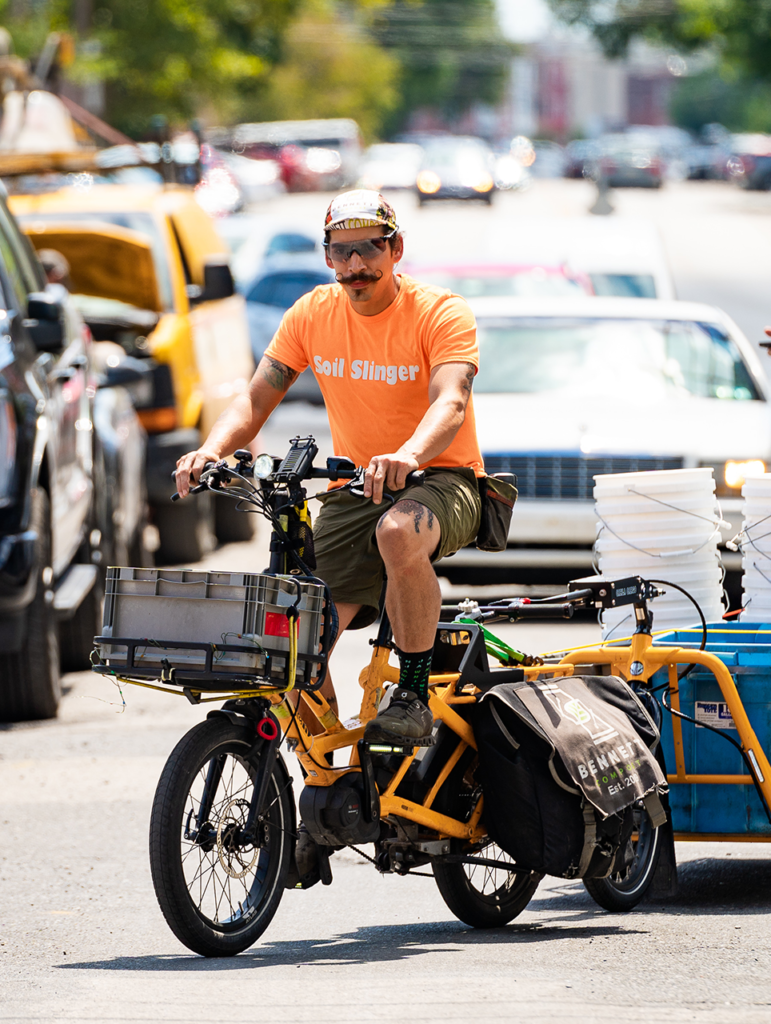

Another option not considered by OTIS, despite requests for inclusion, was the creation of a transitway in the center median of Washington Avenue. The proposed transitway could have initially been utilized by buses (i.e. Route 64) and then in joint use with a new trolley route running from West Philadelphia along Washington Avenue and Columbus Boulevard to the Frankford Avenue trolley loop. This would have significantly improved mobility for all residents, not just those seeking to use bikes. This new route could have been (and still can be) implemented as a part of SEPTA’s Trolley System Modernization project.
I had an idea over 20 years ago that was similar. But intead of running the streetcar to the waterfront use 4th and 5th streets (there used to be streetcars here) to connect with Girard Avenue and then also using 52nd Street to connect to the Grays Ferry bridge. In this way a large loop can be created. But the City clearly does not care about transit at all, viewing it as only something for the poor and hence can mostly be neglected until things fall aport. Look at the Kawasaki high floor trolleys still in use 32 year after the Americans with Disabilities Act.
When you interview a person write down relevant information that coincides with the truth. .
I personally gave you facts. You put down what you wanted. We had close to 2000 people on petitions in our possession
That number would have been more if it was not for the pandemic.
The residents worked very hard to try to protect the bikers who don’t need to be on Washington Avenue and the interest of all the people in our community our homes is a factor with buses running down the street, you’ve never reported the full picture of damage to our homes..
The danger caused by the City’s lack of interest to all the people could very well loose lives. Safety should be our priority.
The City Democracy is more like hypocrisy!
We object to your characterization that a democratic decision regarding Washington Avenue is being undermined by one person. This is not true. Councilman Johnson has the support of the majority of The Washington Avenue businesses and his constituents.
Save Washington Avenue Coalition (SWAC) a group of community organizations and businesses in the area, was formed to push back against the “proposed “road diet “ changes and the negative impacts it will have on the residents and businesses in the area. SWAC repeatedly petitioned Councilman Johnson to support the retention of the five lane option for Washington Avenue.
As a result of community outrage at these proposed changes, Councilman Johnson has resisted pressure being fostered on him by the influential Bicycle Coalition and others who wish to force upon residents and business owners their vision for Washington Avenue.
From the very beginning OTIS has pushed an approach that aligns closely to the Bicycle Coalition and their powerful and their influential friends. These include the mayor, developers, and those who seek to accelerate the gentrification occurring in the area. Though they are not the majority, they seek to portray themselves as such, portraying the views of long-term residents and businesses owners as a minority opinion.
From the very beginning only three options were presented in the survey: a three-lane option; a four-lane option and a mixed option.” The five-lane option was never presented as an option.
OTIS was determined to secure what it wanted and manipulated traffic data and analyses etc. to show “safety concerns for the bicycles” while ignoring the community’s safety and other issues:
• Washington Avenue is an arterial. The proposed reduction of traffic lanes on this arterial will result in the loss of an important evacuation and an emergency route. Washington Avenue is the only evacuation route for the 6000+ South and Southwest Philadelphian residents living around The Hilco refinery. Should there be a flood, serious chemical leaks or explosions that cannot be contained or whose noxious fumes make the air unbreathable an evacuation of the area will BE REQUIRED. A massive evacuation will not be possible if lane reduction occurs.
• loss of businesses that rely on this traffic for their survival
• loss of employees’ jobs;
• Otis’s traffic study directs excess traffic from Washington Ave onto the smaller adjacent residential streets These streets are unable handle the large number of truck. semis and tractor trailers that use Washington Avenue. It will not only damage property and the street itself, but will greatly endanger the lives residents living on these streets.
We questioned OTIS’s traffic analytical data on Washington Avenue and secure information that throws doubt on their analysis. This has been ignored.
Your article does not speak of any opposition groups against the proposal. You disparage Councilman Johnson and try to make him look like an obstructionist. He is not. He is courageous, fair and represents businesses and his constituent’s interest. He listens to his constituents and unlike other politicians he has refused to cave into the pressure being place by the Bicycle Coalition, the mayor, the developers and the media, HE STANDS WITH US, HIS CONSTITUENTS AND THE WASHINGTON AVENUE BUSINESSES.
Yours,
SAVE WASHINGTON AVENUE COALITION.
• Claudia Sherrod, Pres. Point Breeze Community Network Plus
• Albert Littlepage, Pres. Point Breeze Community Development Coalition Inc.
• M. Shikomba, Pres. North of Washington Avenue Coalition
• Tom Donatucci, Managing Partner, Washington Property Owners Association
• Gabriel Pechaceck, Washington Avenue Association of Business and Residents
• Daniel Renzulli, President The United Merchants of the 9th Street Business Association
“Bicycle Coalition and their powerful and their influential friends” hahahaha that’s good